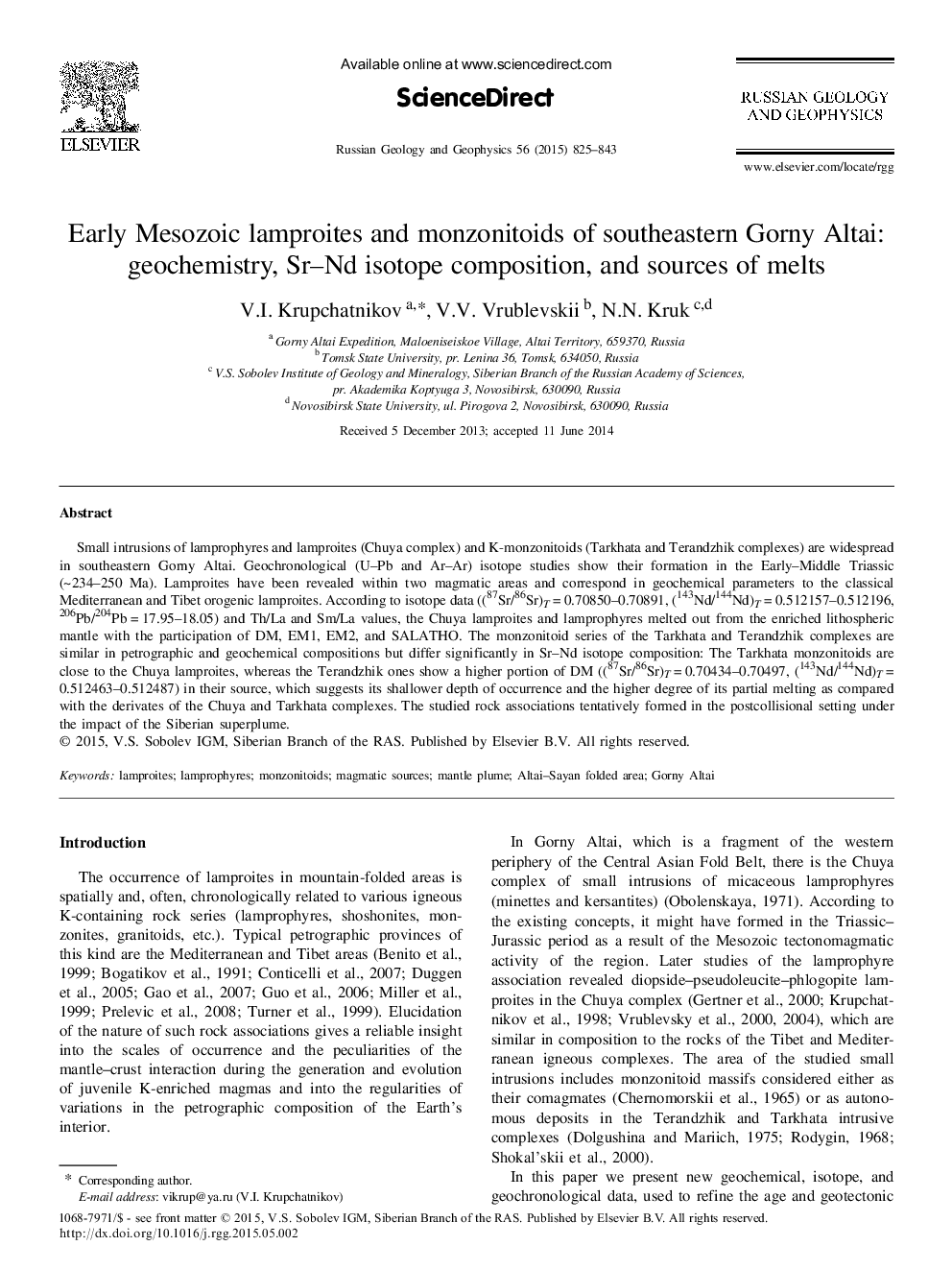| کد مقاله | کد نشریه | سال انتشار | مقاله انگلیسی | نسخه تمام متن |
|---|---|---|---|---|
| 4738949 | 1358395 | 2015 | 19 صفحه PDF | دانلود رایگان |

Small intrusions of lamprophyres and lamproites (Chuya complex) and K-monzonitoids (Tarkhata and Terandzhik complexes) are widespread in southeastern Gorny Altai. Geochronological (U-Pb and Ar-Ar) isotope studies show their formation in the Early-Middle Triassic (~ 234-250 Ma). Lamproites have been revealed within two magmatic areas and correspond in geochemical parameters to the classical Mediterranean and Tibet orogenic lamproites. According to isotope data ((87Sr/86Sr)T = 0.70850-0.70891, (143Nd/144Nd)T = 0.512157-0.512196, 206Pb/204Pb = 17.95-18.05) and Th/La and Sm/La values, the Chuya lamproites and lamprophyres melted out from the enriched lithospheric mantle with the participation of DM, EM1, EM2, and SALATHO. The monzonitoid series of the Tarkhata and Terandzhik complexes are similar in petrographic and geochemical compositions but differ significantly in Sr-Nd isotope composition: The Tarkhata monzonitoids are close to the Chuya lamproites, whereas the Terandzhik ones show a higher portion of DM ((87Sr/86Sr)T = 0.70434-0.70497, (143Nd/144Nd)T = 0.512463-0.512487) in their source, which suggests its shallower depth of occurrence and the higher degree of its partial melting as compared with the derivates of the Chuya and Tarkhata complexes. The studied rock associations tentatively formed in the postcollisional setting under the impact of the Siberian superplume.
Journal: Russian Geology and Geophysics - Volume 56, Issue 6, June 2015, Pages 825-843